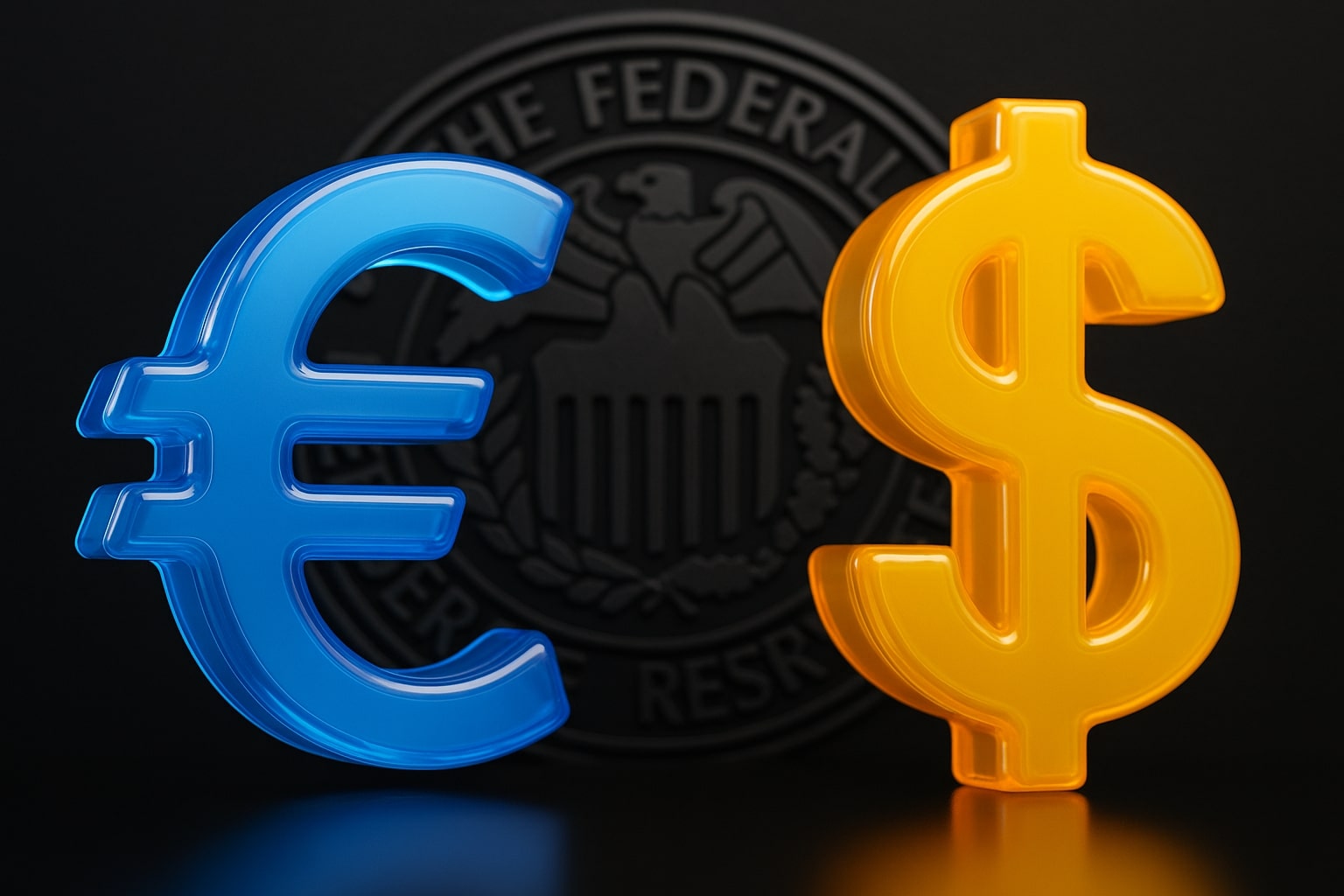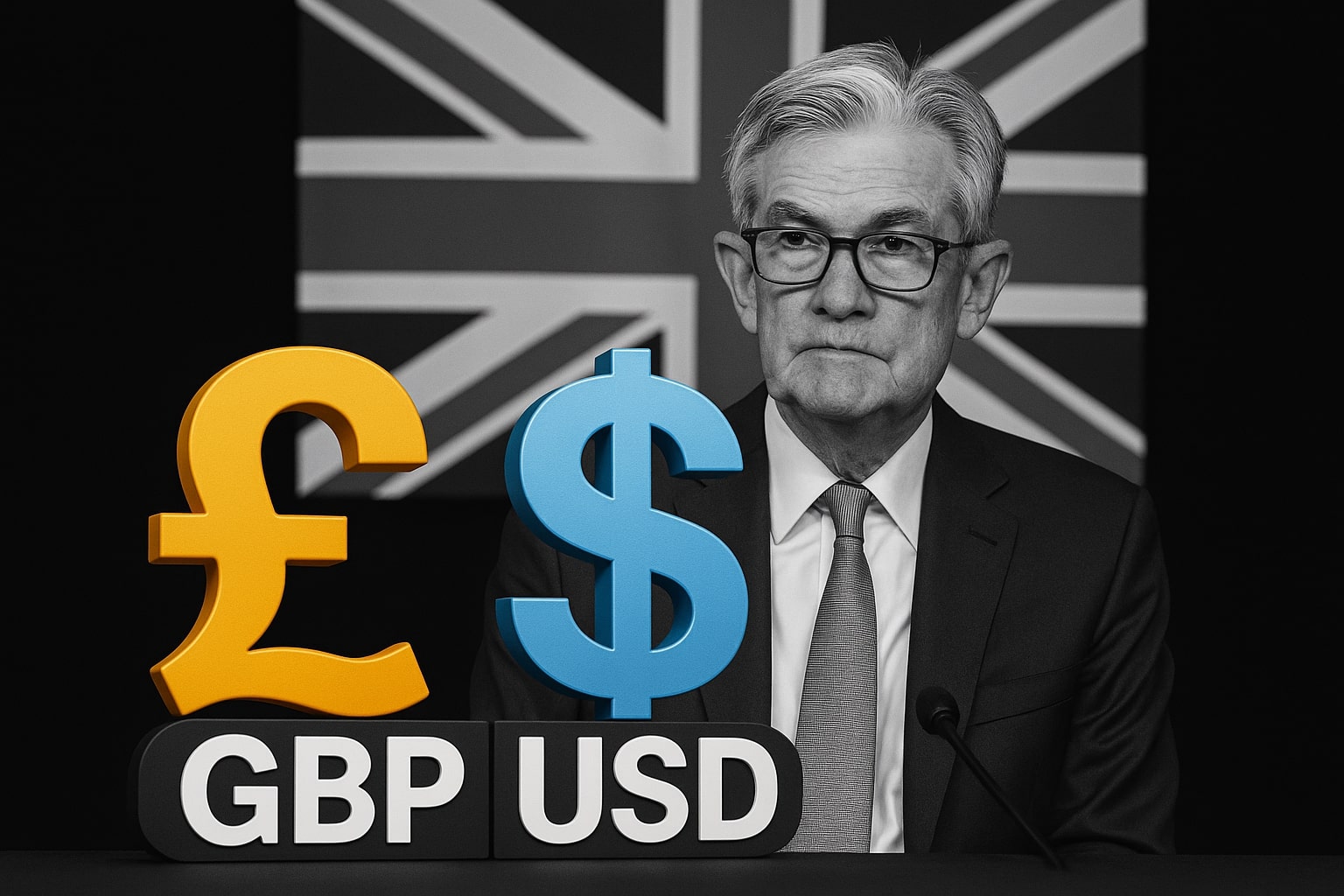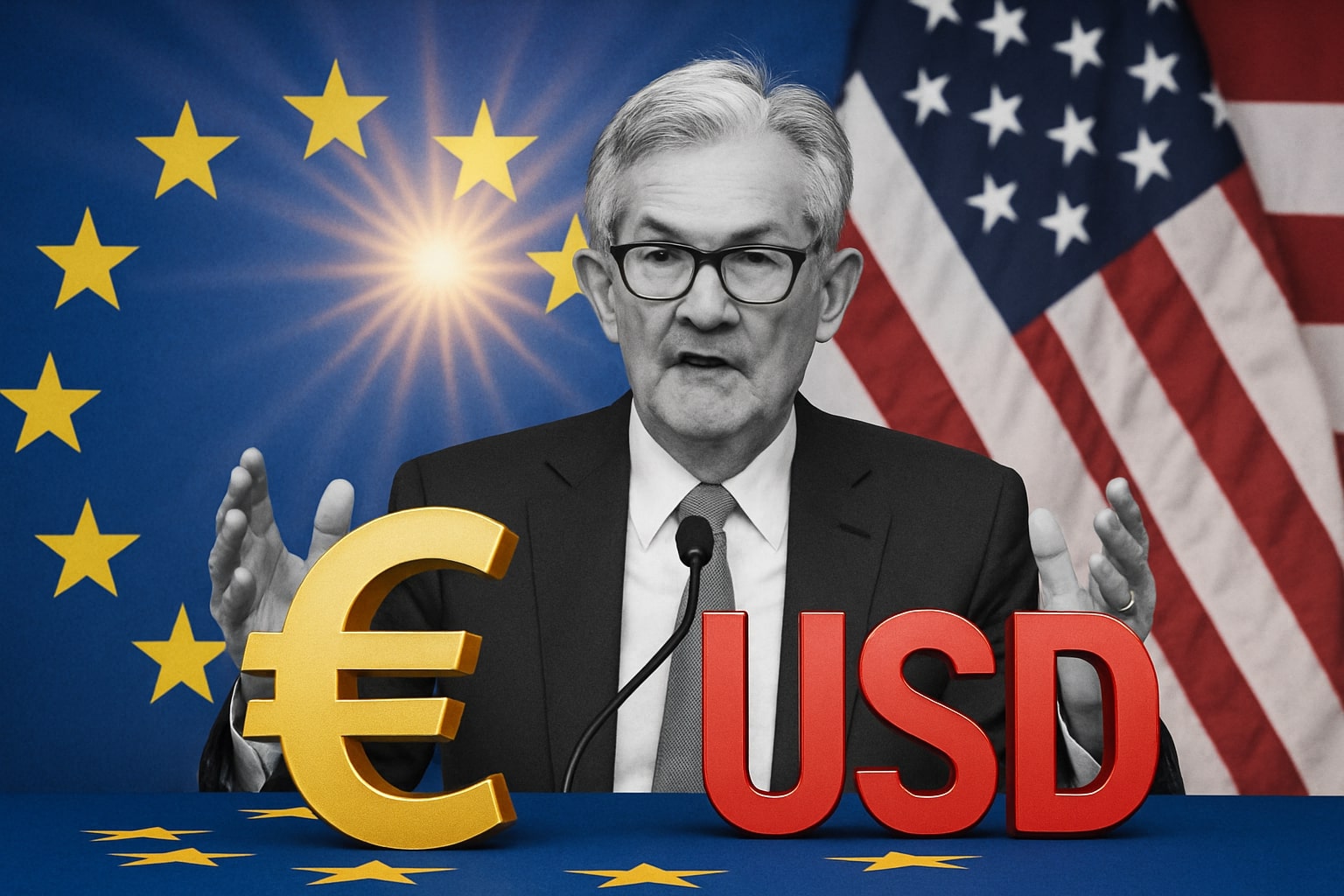
EUR/USD Price Forecast - EURO to Dollar Drop to 1.1560, France’s Political Turmoil and Italy’s 2.4% Output
The Euro posts its worst week of 2025, down 1.4%, as the Dollar Index surges to 99.26 (+1.7%) amid Macron’s government turmoil, a €17.2B German trade surplus, and fading hopes of ECB support | That's TradingNEWS
EUR/USD (EURUSD) Slumps to Two-Month Low as Dollar Strengthens on Political Chaos and Weak Eurozone Data
Read More
-
VOO ETF Hits $630 as Fed Shift and AI Growth Power 2026 Rally Toward $700
07.12.2025 · TradingNEWS ArchiveStocks
-
XRP ETFs XRPI & XRPR Aim for $1B Inflows as XRP Holds $2.02 Support
07.12.2025 · TradingNEWS ArchiveCrypto
-
Natural Gas Price (NG=F) Rallies to $5.29, Freezing Temperatures Spark Bullish Breakout
07.12.2025 · TradingNEWS ArchiveCommodities
-
USD/JPY Price Forecast - Dollar Extends Slide to 154 as BoJ Hawkish Pivot Drive Yen Toward 150
07.12.2025 · TradingNEWS ArchiveForex
ECB and Fed Divergence Keeps Euro Under Pressure
The widening divergence between the European Central Bank and the Federal Reserve continues to anchor EUR/USD lower. Although San Francisco Fed President Mary Daly signaled that further rate cuts are likely due to a “worrisome deterioration” in the labor market, the overall tone from U.S. policymakers remains cautious rather than aggressively dovish. In contrast, the ECB’s internal division on inflation and growth has reduced market conviction in its ability to manage downside risks effectively. The U.S. remains relatively insulated by robust corporate balance sheets and capital inflows, while the eurozone faces capital outflows toward higher-yielding U.S. assets. The DXY index’s sustained move above 98.70 confirms structural dollar demand, with a potential upside target near 100.25 if sentiment remains risk-averse.
Investor Sentiment and Market Positioning
Institutional positioning reflects growing bearishness on the euro. Latest CFTC data shows speculative net shorts on the euro increasing by 9,800 contracts last week, marking the largest one-week build since July. Meanwhile, long exposure to the U.S. dollar hit a 10-month high. European equity outflows totaled $2.3 billion this week, according to EPFR Global, as investors reduced exposure to cyclical sectors and rotated into dollar-based defensive assets. The euro’s decline is further amplified by declining energy price support — Brent crude (BZ=F) is down 3.7% on the week, while natural gas (NG=F) lost 2.6%, diminishing Europe’s export competitiveness in energy-linked goods.
Macro Risks: U.S. Shutdown, Trade War, and Fiscal Tightening
The extended U.S. government shutdown, now in its second week, continues to disrupt federal operations and delay macro data publication, introducing volatility to dollar liquidity but paradoxically sustaining dollar strength. At the same time, the Trump administration’s tariff extensions on Chinese and European imports have worsened the global trade outlook, with renewed tensions overshadowing any relief from Fed rate cut expectations. In Europe, tighter fiscal rules and renewed debate over the EU Stability Pact have resurfaced, pressuring governments with high debt ratios, including Italy and France, to rein in spending even as growth stagnates.
Short-Term Outlook: Euro Vulnerable, U.S. Resilient
Given the confluence of factors — French political instability, Italian industrial decline, persistent U.S. dollar strength, and diverging central bank trajectories — EUR/USD remains firmly in bearish territory. The pair’s failure to reclaim the 1.1600 handle reinforces downside pressure heading into next week’s trading. Unless the U.S. consumer confidence data or Fed commentary delivers a major dovish surprise, the euro is likely to continue testing lower supports.
Verdict: EUR/USD – Sell Bias Maintained (Bearish Outlook)
Bias: Bearish
Current level: 1.1560
Resistance: 1.1600 / 1.1650
Support: 1.1540 / 1.1470 / 1.1395
Target range: 1.1450–1.1300 (Q4 2025 projection)
The structural outlook for EUR/USD remains negative as long as the pair trades below 1.1650, with a strong U.S. dollar narrative reinforced by global political instability and economic divergence across the Eurozone. Only a decisive break above 1.1700 would neutralize the trend — a scenario that remains unlikely in the current macro and technical landscape.



















